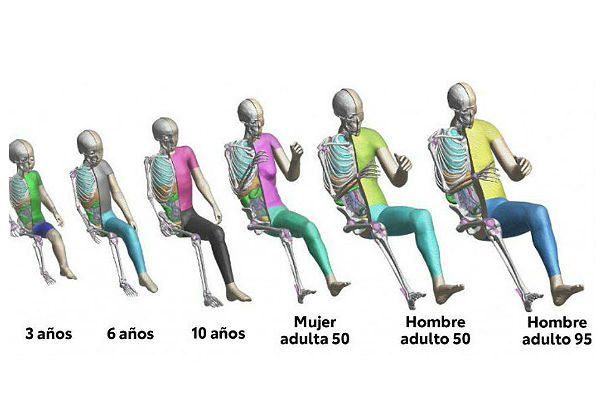2035 The autonomous vehicle will reach 14% of sales
Autonomous car in the middle of the road
Is it rigorous to say that cars are
sexist
?
Or that they at least contribute to the inequality of women with respect to men?
That manufacturers and institutions ignore passive safety for vehicle occupants based on male parameters?
The affirmative answers are found in a dense study by
the Biomechanical Institute of Valencia, part of the Diamond project financed by the European Union and coordinated by the Eurecat technology center
.
The purpose of the report is to achieve equality in the autonomous and connected cars that will come,
overcoming the barriers that exist in the traditional automotive industry in terms of gender
.
And he comes to the conclusion that the vehicle construction model must be rethought.
That new
thinkers
and designers (and designers) should
ask themselves at every step they take and every application they install if it works for both men and women
.
The study claims that the female crash test dummy is "a scaled-down male dummy."
The strongest arguments to inspire a change of direction in the industry are found in the
passive safety of vehicles and the type of research that has been carried out by manufacturers and
vehicle safety rating agencies.
Citing numerous works by researchers, the Valencian study, coordinated by
Begoña Mateo
, regrets the use of male anthropometry and biomechanics dummies, which have been the only ones used to find physical damage in frontal, side or seat belt crash tests.
Agencies such as the European EuroNCAP do use child dummies
in the back
.
And the studio complains that it is finally being used
a female mannequin for these tests, but which only covers 5% of the female biotype.
In reality, “it is a reduced-scale male mannequin”
.
It also denounces that these
dummies
of women are always placed in the passenger seat, never in front of the wheel, when there are millions of women who drive every day.
The protection of pregnant women is also not achieved
: for 64% of those who exceed six months of pregnancy, seat belt protection is not valid.
The highest fetal mortality rate occurs in traffic accidents
.
The report ensures that a female occupant has
a 47% higher risk than a man of suffering serious injuries
in an accident and that the percentage rises to 71% when talking about moderate injuries.
The probability of a fatal outcome for women would be 17% higher than for men
.
Autonomous cars must take into account the needs of the female population.
The report (
The autonomous vehicle seen with purple glasses. Ideas for a more inclusive and equitable autonomous car from a gender perspective
) asks how and for whom cars are designed.
And who are responsible for designs and regulations.
It finds "a clear predominance of male engineers and designers (...) demonstrating
the existence of a culture of normative masculinity within the industry
that is unlikely to manifest itself in thoughtful and gender-inclusive design."
The study acknowledges that
Volvo
made four decades of research available to the industry in 2019 without anything having changed.
And that this brand already had a
women-only design program
,
Your Concept Car
, in 2004.
Conforms to The Trust Project criteria
Know more
Motor
MotorIsaac Ortega as new co-director general of Hankook Iberia
MotorVehicle production fell by 6.8% weighed down by the chip crisis
Motor2021 closed with 1,004 deaths in a traffic accident, 97 less than in 2019
See links of interest
Last News
Home THE WORLD today
What
Work calendar 2022
Poland - Spain, live
Real Madrid - Unics Kazan, live

